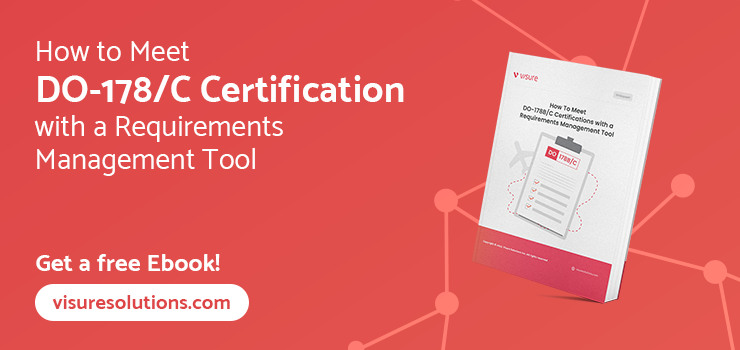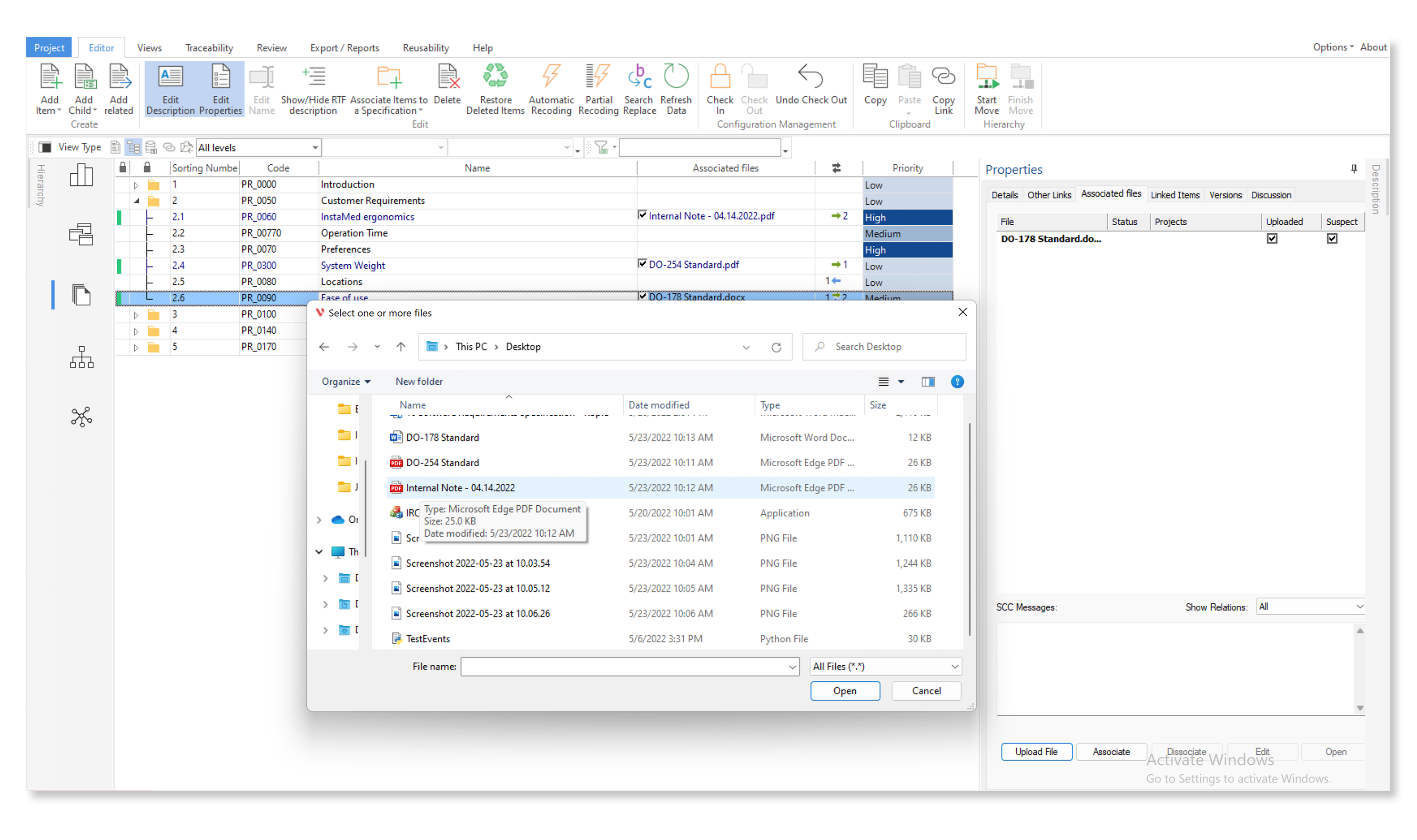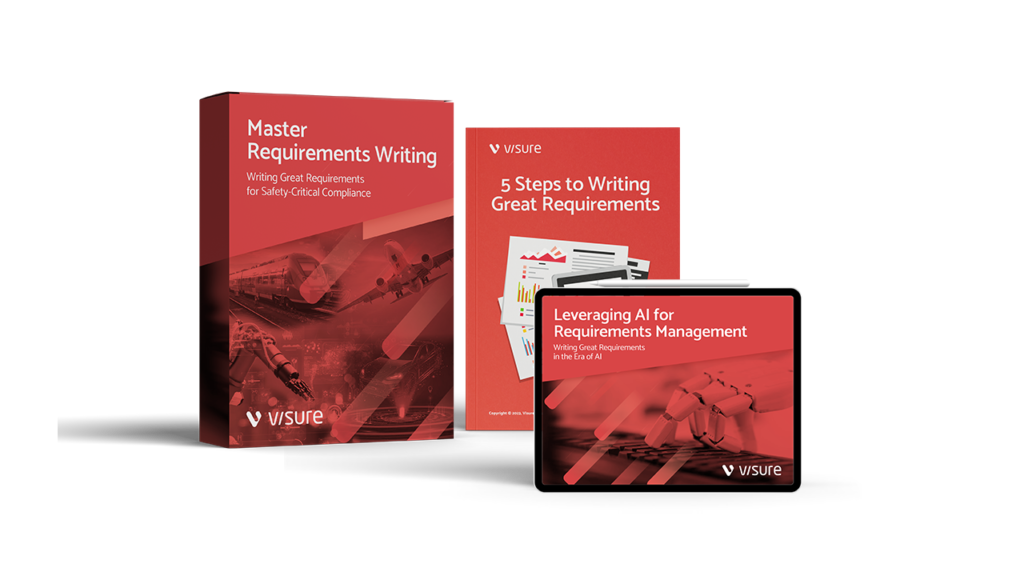Introduction
RTCA DO-178B, developed by the Radio Technical Commission for Aeronautics (RTCA), is a globally recognized standard that provides guidelines for the development and certification of software used in airborne systems and equipment. Officially titled Software Considerations in Airborne Systems and Equipment Certification, this standard plays a critical role in ensuring the safety, reliability, and compliance of software within aerospace applications.
DO-178B outlines a structured approach to software development, focusing on processes such as requirement definition, design, coding, testing, and verification. By adhering to this standard, aerospace manufacturers can ensure that their products meet stringent regulatory requirements established by authorities like the FAA and EASA.
In this article, we will explore the key concepts, importance, tool qualification levels, benefits, and solutions for DO-178B compliance, helping you gain a comprehensive understanding of its significance in the aerospace industry.
What is DO-178B?
RTCA DO-178B, formally known as Software Considerations in Airborne Systems and Equipment Certification, is a key software development standard in the aerospace industry. It provides a framework for creating and certifying safety-critical software used in airborne systems to ensure their compliance with stringent aviation safety requirements.
The primary goal of DO-178B is to establish best practices for software development and verification to minimize risks and ensure the reliable performance of airborne systems. This standard defines objectives and processes that developers and testers must follow to ensure the software meets safety and operational requirements.
Key objectives include:
- Ensuring traceability between requirements, design, and code
- Implementing rigorous testing and verification procedures
- Providing evidence to support certification by aviation authorities
The Radio Technical Commission for Aeronautics (RTCA), in collaboration with EUROCAE, developed DO-178B as an evolution of the earlier DO-178A standard. Published in 1992, it became the benchmark for certifying airborne software systems worldwide.
The development of DO-178B marked a shift toward more structured software lifecycle management, aligning with advancements in software engineering. Its importance paved the way for the updated DO-178C, which incorporated modern development techniques while maintaining the core safety principles established by DO-178B.
Key Concepts in DO-178B
Software Development and Certification Processes
DO-178B establishes a comprehensive framework for software development and verification in the aerospace industry. It outlines key processes including requirements definition, software design, coding, testing, and verification. Each process must meet specific objectives to ensure the software’s safety and reliability.
One of the primary requirements is rigorous traceability between requirements, design elements, and test cases to demonstrate that all functional aspects are thoroughly verified.
Safety-Critical Systems in the Aerospace Industry
Airborne systems operate in environments where failure can have catastrophic consequences, making safety a top priority. DO-178B provides stringent guidelines to mitigate risks by ensuring that software components in these systems perform reliably under various operational conditions.
Examples of safety-critical systems include flight control systems, engine management, and avionics.
Understanding Software Levels (A to E) Based on Potential Failure Impact
DO-178B categorizes software into five distinct levels (A through E) based on the impact of software failure on aircraft operation and passenger safety:
- Level A: Catastrophic failure (complete loss of control or aircraft)
- Level B: Hazardous failure (severe injuries or system failure)
- Level C: Major failure (significant reduction in operational capability)
- Level D: Minor failure (minimal impact on operations)
- Level E: No safety effect (no impact on safety or operation)
The rigor of development and verification processes increases with higher safety levels (Level A being the most stringent).
Certification Authority Roles
Certification authorities such as the Federal Aviation Administration (FAA) and European Union Aviation Safety Agency (EASA) play a crucial role in evaluating and approving software developed under DO-178B.
Their responsibilities include:
- Reviewing documentation and artifacts to ensure compliance
- Approving tool qualifications and verification activities
- Certifying that software meets the required safety and performance standards
By following the structured guidelines in DO-178B, organizations can secure certifications, build trust with regulatory bodies, and ensure the safety of aerospace software systems.
What is the Importance of DO-178B?
Ensuring Safety and Reliability in Airborne Software
Safety is a top priority in the aerospace industry, where even minor software failures can lead to catastrophic consequences. DO-178B provides a structured approach to ensure the development of highly reliable, fault-tolerant software for airborne systems. By enforcing stringent development and verification processes, it reduces the risk of software errors and improves overall system safety.
Compliance Requirements for Regulatory Certification (FAA, EASA)
To achieve airworthiness certification from regulatory authorities like the Federal Aviation Administration (FAA) and the European Union Aviation Safety Agency (EASA), manufacturers must demonstrate that their software complies with DO-178B guidelines.
The certification process involves:
- Thorough documentation of development and verification processes
- Demonstrating traceability between requirements, design, and testing
- Providing evidence of rigorous testing and verification
Compliance with DO-178B is essential for obtaining the necessary certifications for flight-ready software.
Industry Adoption and Relevance
Since its publication by the Radio Technical Commission for Aeronautics (RTCA), DO-178B has become a globally recognized standard across the aerospace sector. Many leading aerospace companies, including aircraft and avionics manufacturers, rely on it to develop and certify software for mission-critical systems.
The standard’s influence extends beyond traditional aerospace applications, finding relevance in emerging areas such as unmanned aerial vehicles (UAVs) and space systems. Its principles continue to guide safe software practices in complex aviation environments.
DO-178B Tool Qualification Levels (TQL)
DO-178B introduces Tool Qualification Levels (TQL) to classify software tools used in the development, verification, and validation of airborne systems. These levels range from TQL 1 (highest criticality) to TQL 5 (lowest criticality), depending on the tool’s impact on safety and its role in the development lifecycle:
- TQL 1: Tools that could introduce errors directly affecting critical safety functions
- TQL 2: Tools used in verification processes where undetected errors could impact safety
- TQL 3: Tools that automate software code generation or code verification tasks
- TQL 4: Tools that support but do not directly verify airborne systems
- TQL 5: Tools with no impact on software correctness or safety
Criteria for Tool Classification
The determination of a tool’s qualification level depends on two factors:
- Purpose: What role does the tool play in the software development or verification process?
- Potential Error Impact: What is the severity of errors that could result if the tool malfunctions?
For example, tools used for automated code generation or requirement validation are likely to fall into higher qualification levels due to their direct influence on safety-critical components.
Importance of Qualified Tools in Achieving Compliance
Using qualified tools offers several benefits for achieving compliance with RTCA DO-178B:
- Reduced manual effort: Automating verification tasks minimizes human errors.
- Improved efficiency: Streamlined development processes and faster testing cycles
- Enhanced traceability: Ensures comprehensive documentation of verification activities
- Regulatory acceptance: Certification authorities such as the FAA and EASA require evidence of tool qualification for software certification.
By qualifying tools appropriately, companies can better meet compliance requirements, reduce risks, and deliver safer airborne software solutions.
Benefits of DO-178B Compliance
Improved Software Quality and Safety
Compliance with RTCA DO-178B ensures a disciplined approach to software development and verification, significantly enhancing the quality and reliability of airborne systems. Key benefits include:
- Early detection and correction of errors through rigorous testing and verification
- Clear traceability from requirements to code and testing
- Comprehensive validation processes to ensure the software meets all operational and safety requirements
This results in safer, more robust software capable of operating reliably under mission-critical conditions.
Competitive Advantage for Aerospace Companies
Adhering to DO-178B provides aerospace manufacturers and software developers with a strong competitive edge:
- Market Access: Compliance is often mandatory for selling systems in regulated aerospace markets.
- Reputation for Safety: Companies that meet DO-178B standards demonstrate a commitment to producing safe and reliable systems, building trust with customers and stakeholders.
- Innovation Opportunities: Streamlined development processes pave the way for adopting advanced technologies such as AI-driven tools for requirements management and testing.
Simplified Certification Processes
Achieving certification from authorities like the FAA and EASA is often complex and resource-intensive. DO-178B compliance simplifies this process by:
- Providing a clear roadmap for documentation, verification, and validation
- Establishing best practices that meet regulatory requirements
- Offering guidelines for qualifying software development tools
This not only accelerates certification timelines but also reduces the likelihood of delays or rejections during certification reviews.
In summary, compliance with DO-178B not only ensures safer software but also enhances business efficiency, market competitiveness, and long-term product success in the aerospace sector.
DO-178B Solutions and Software Tools
Leveraging AI with Visure Requirements ALM Platform
To meet the stringent demands of RTCA DO-178B, organizations need powerful solutions that streamline software development, verification, and compliance processes. The Visure Requirements ALM Platform stands out as an advanced solution, integrating AI-driven capabilities to support compliance and improve productivity.
Key Features of Visure Requirements ALM Platform for DO-178B Compliance
- Comprehensive Requirements Management: Ensures complete traceability between requirements, design, code, and testing for high-quality software development.
- Automated Traceability: Reduces manual work by linking requirements to corresponding artifacts, ensuring compliance with DO-178B traceability guidelines.
- AI-Powered Assistance:
- Suggests requirement improvements to meet DO-178B standards
- Automates requirement classification for Tool Qualification Levels (TQL)
- Facilitates intelligent document reviews to accelerate certification efforts
- Collaboration Support: Enables teams to work together seamlessly across development phases, ensuring accurate requirement capture and alignment with DO-178B guidelines.
Benefits of Using Visure for DO-178B Compliance
- Reduced Certification Time: Streamlined processes and automated traceability help speed up certification timelines with regulatory bodies like FAA and EASA.
- Enhanced Software Quality: AI-driven tools minimize errors in requirement management and verification.
- Efficient Compliance Management: Built-in support for safety-critical standards, including DO-178B, ensures comprehensive adherence to best practices.
By leveraging the Visure Requirements ALM Platform, aerospace organizations can not only simplify their compliance with DO-178B but also gain a competitive edge through improved software safety, reliability, and development efficiency.
Best Practices for DO-178B Compliance
Key Steps for Successful Compliance
To ensure compliance with RTCA DO-178B, organizations must adopt a structured approach throughout the software development lifecycle:
- Early Requirements Definition: Clearly define and document software requirements to align with safety and operational needs.
- Thorough Verification and Validation: Perform continuous testing and validation to detect and address issues early.
- Configuration Management: Maintain control of software versions, artifacts, and changes to ensure accurate traceability.
- Tool Qualification: Select and qualify tools according to the applicable Tool Qualification Levels (TQL) to ensure safe software development and verification.
Documentation and Traceability Best Practices
Comprehensive documentation and traceability are essential for achieving and demonstrating compliance with DO-178B:
- End-to-End Traceability: Establish clear links between requirements, design, code, and testing artifacts to ensure compliance and facilitate certification.
- Maintain Accurate Records: Document all verification and validation activities, including test cases, results, and defect resolutions.
- Automated Traceability Solutions: Use platforms like the Visure Requirements ALM Platform to automate traceability and reduce the risk of errors.
Importance of Training and Awareness
Proper training and awareness are crucial for successful compliance with DO-178B:
- Role-Specific Training: Provide training tailored to different roles, such as developers, testers, and compliance managers.
- Awareness of Standards: Ensure teams understand the requirements of DO-178B and their implications on software development practices.
- Continuous Learning: Stay updated on changes to regulatory requirements and best practices in the aerospace industry.
By adopting these best practices, aerospace organizations can efficiently achieve DO-178B compliance while enhancing software quality, safety, and development efficiency.
Conclusion: The Future of DO-178 Standards
Transition to DO-178C and Evolving Industry Requirements
As technology advances, the transition from DO-178B to DO-178C reflects the evolving needs of the aerospace industry. DO-178C introduces improved guidelines for complex systems, model-based development, and formal methods to handle modern safety-critical software challenges. This transition underscores the industry’s commitment to enhancing safety while embracing innovation.
The Role of AI and Automation in Compliance Solutions
The adoption of AI and automation is transforming how organizations achieve compliance with standards like DO-178B and DO-178C. AI-driven tools, such as the Visure Requirements ALM Platform, streamline processes by:
- Automating requirement classification, traceability, and document reviews
- Identifying errors early to improve software quality
- Accelerating certification efforts with intelligent suggestions and validation checks
These advancements not only reduce manual workloads but also enhance accuracy and efficiency throughout the development lifecycle.
Staying compliant with evolving aerospace standards requires continuous improvement, the adoption of modern tools, and a proactive approach to training and process optimization. Leveraging solutions like Visure Requirements ALM empowers organizations to meet compliance demands while delivering safer and more reliable airborne systems.
Experience Visure Today! Book Your Demo Now!
Ready to simplify DO-178B compliance and enhance your software development process?
Check out Visure’s 30-day free trial and discover the benefits of AI-driven requirements management and compliance solutions.


